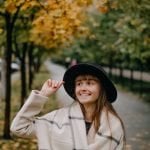How to Do a Competitor SERP Analysis
Beating your SERP competition can be tough, but it’s still doable. To reach the top of the SERP, you have to go through dozens of steps. One of the initial and most important ones involves performing an extensive SERP analysis.
In this guide, we’ll explain what a SERP analysis is, what users expect to see in search results, how to analyze what your rivals are doing to reach the top, and how to use this information to supercharge your SEO strategy.
So, let’s dive in!
What is a SERP analysis?
SERP analysis is a process of examining the top-ranking pages that appear when looking for specific queries in search engines like Google, Bing, or Yahoo.
The main purpose of performing a SERP analysis is to gain insights into the content that has high rankings on search engines. It can help you learn why certain content is displayed in response to particular search queries. By understanding the SERP landscape, you can make informed decisions about keyword targeting, content creation, and on-page optimization. This can improve your website’s visibility and help you get more traffic from search engines.
How to do a SERP analysis
To conduct an effective competitive analysis on the SERP for specific queries, follow these key steps:
- Define your target keywords: Your first task is to identify the keywords that are central to your SEO strategy. Search for keywords that your competitors are using and uncover any related terms that would work for you. Choose the most valuable keywords for reaching your goal by analyzing their relevance and metrics.
- Understand their search intent: Dive into the search results to uncover the intent behind chosen queries. Are users seeking information, looking to make a purchase, trying to find a specific website, or searching for local businesses or services?
- Assess top-ranking pages: Examine the top-ranking pages on the SERP for your chosen keywords. Take note of what sets these pages apart. What type of content do they provide? What does their backlink profile look like? Which on-page SEO strategies do they apply?
- Examine SERP features: Pay close attention to the kind of features that appear on the SERP after entering a search query. Are there featured snippets, image carousels, or other elements?
- Create content based on your SERP analysis: Create high-quality content based on the analysis of the SERP you target.
Each of these steps can be done manually, but there are special SEO tools that can streamline this process. Each can automate a specific process, and most can provide additional data for a more in-depth analysis. We’ll show you how to perform your SERP analysis with the help of SE Ranking’s tools, specifically.
So, let’s look at each step one by one.
Define target keywords
Choosing the right keywords for SEO is the first and most crucial step in every SERP analysis. We suggest using the following two-step approach:
1️⃣ Search for the keywords your competitors use.
2️⃣ Find related terms using seed keywords.
Once you have a list of keywords, you need to sort through this list to identify the best keywords, which are the ones that align most closely with your goals. Keep keyword relevance and metrics like search volume and competition in mind.
To learn more about how to define your target keywords, refer to our step-by-step guide.
Understand the SERP intent
Now that you have your list of focus keywords, you need to understand what users are searching for when they enter a query. This will help you align your content with your target users’ expectations.
There are several types of intents, including informational (seeking information), transactional (looking to make a purchase), navigational (trying to find a specific website or page), commercial (doing an investigation before buying products or services), or local (looking for nearby businesses or services).
Let’s move on to using SE Ranking to determine an intent. It takes just two steps:
- Navigate to the Keyword Suggestion tool, input your keyword, and select the country.
- On the Overview dashboard, you’ll see the intent. The tool defines it within seconds. It analyzes both the words in the query and the pages and features in search results.
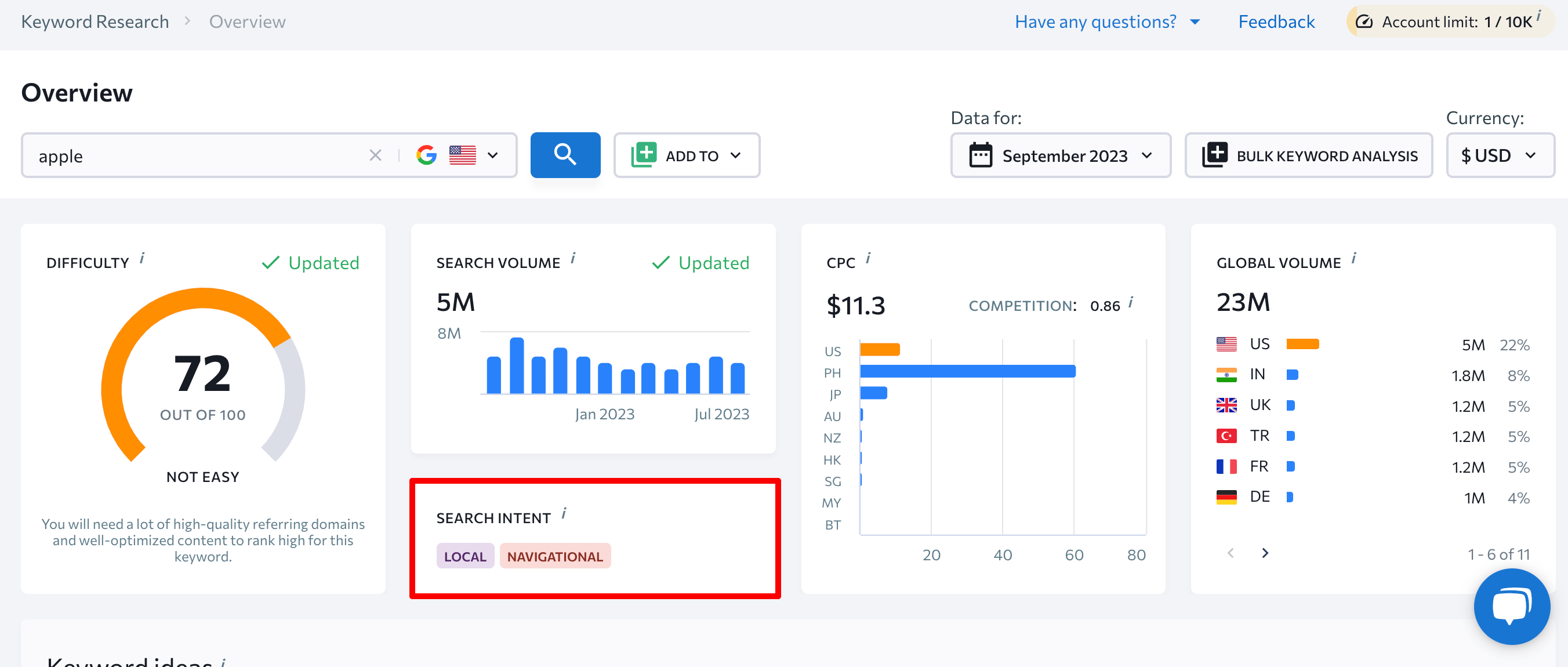
You can speed up this process by performing a bulk analysis. Just enter all the keywords that you need to analyze and push the blue analyze button.
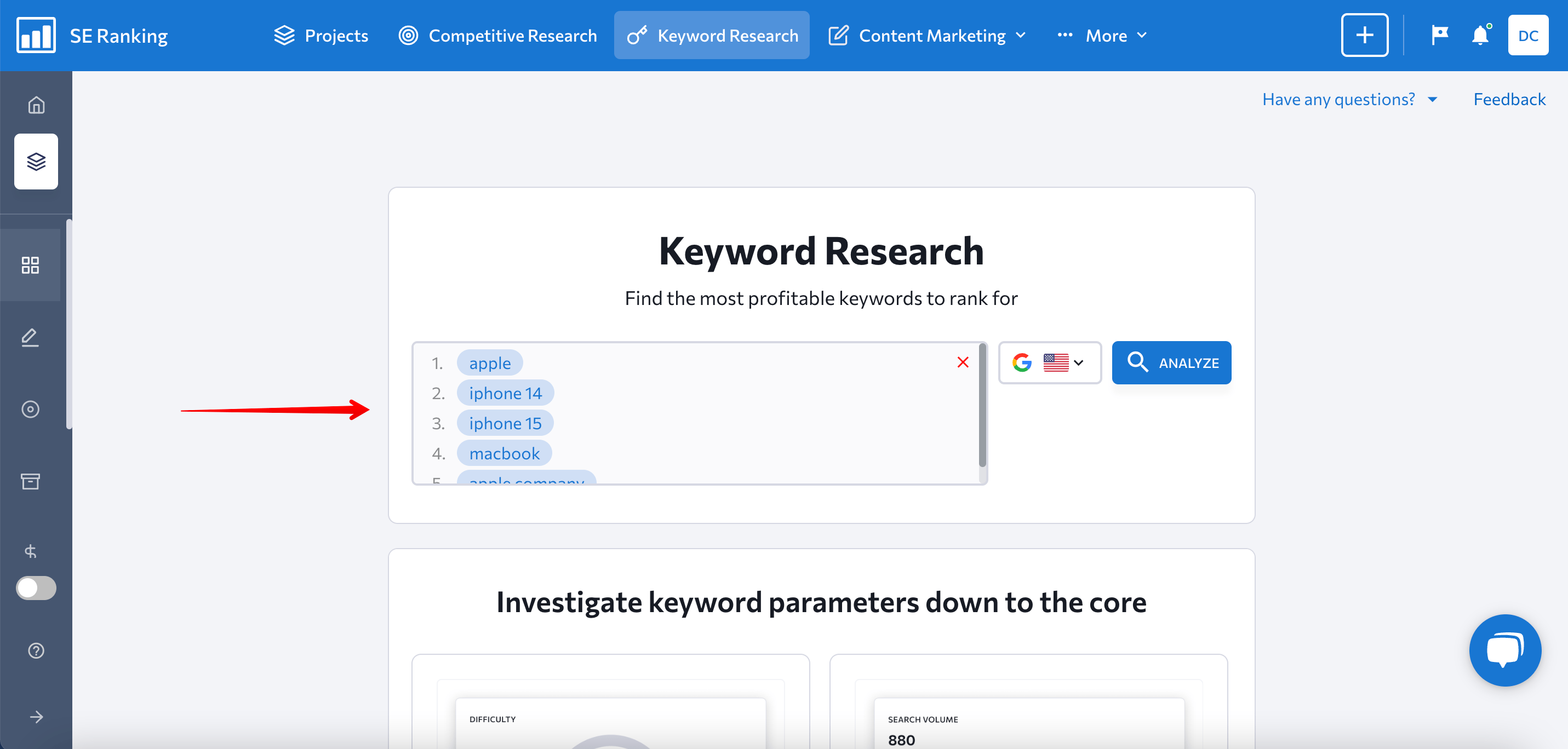
You’ll see the search intent (or a few intents if they intersect) for each keyword.
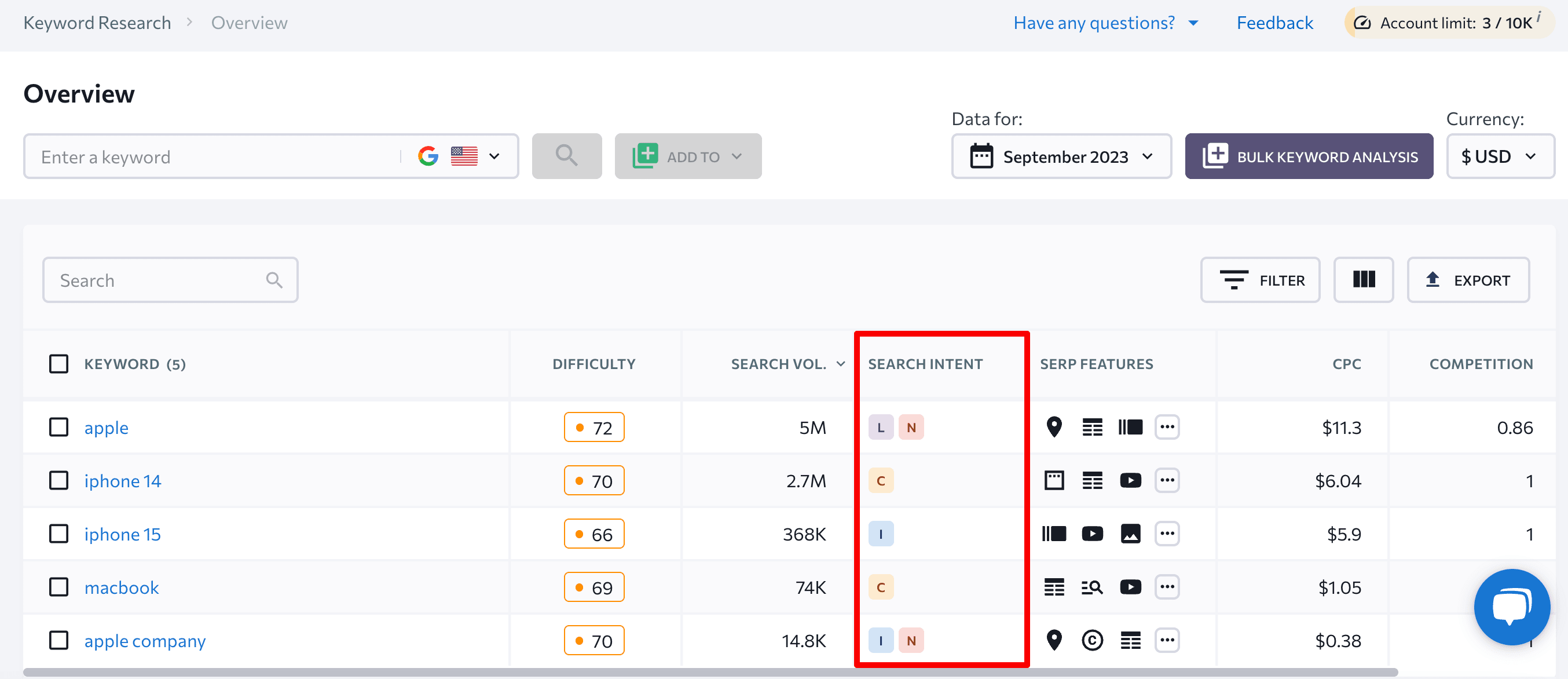
Analyze SERPs for your target keywords
The next step is all about getting a SERP overview. It provides a snapshot of the top-ranking results for a specific keyword. By examining the SERP, you can figure out what tactics your rivals are using, the type of content that resonates with specific audiences, and the SEO strengths and weaknesses of sites that attract those audiences.
To analyze search results, begin by going to the SERP Analysis tool and adding any details of the SERP you plan to investigate. Be sure to select a search engine, location, language, and depth of analysis, and enter both the primary and secondary keywords.
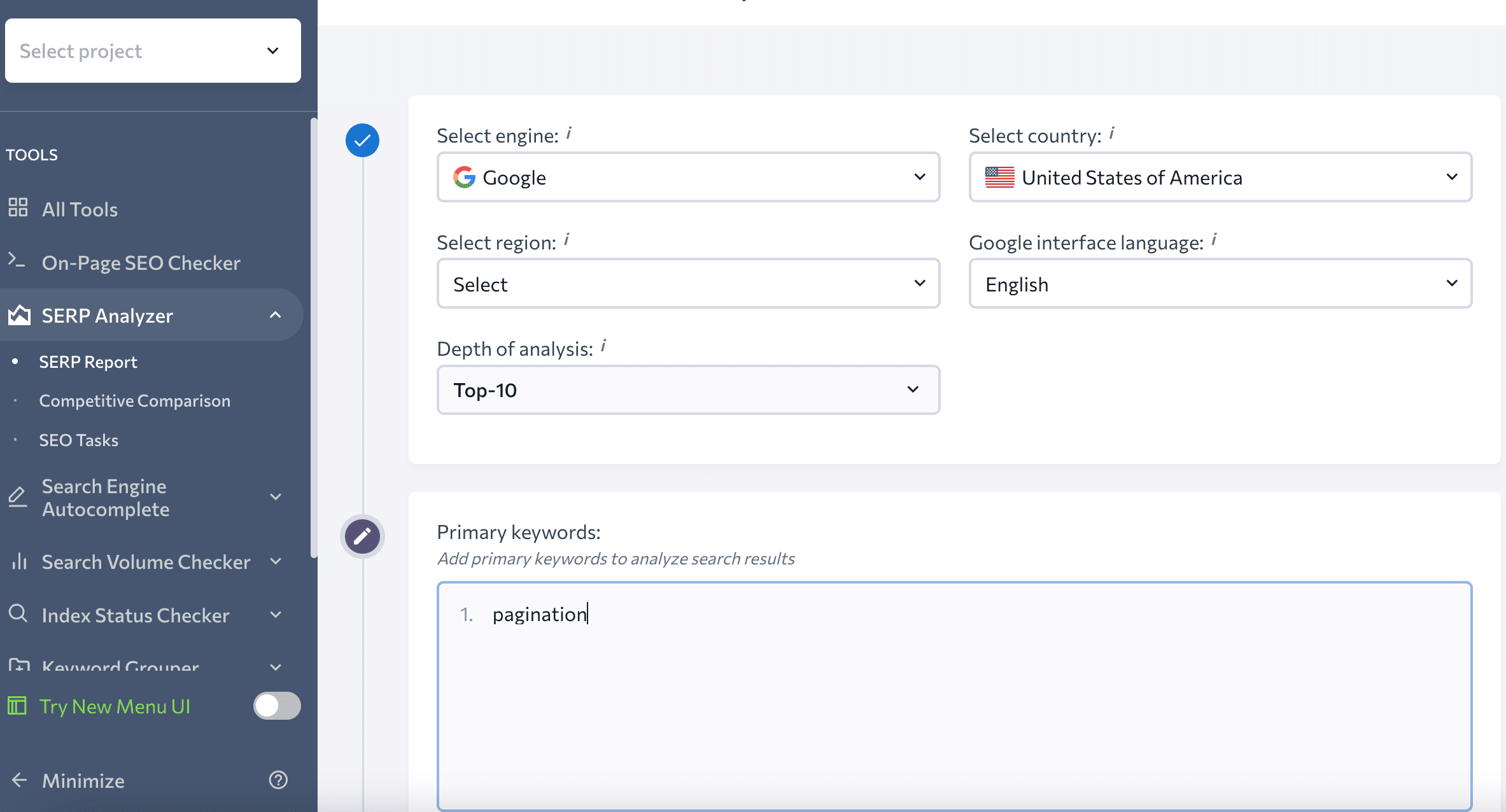
The tool will show you the top-ranking pages along with their metrics to help you learn more about the top players on the SERP for that keyword. Follow these steps to assess the SERP landscape for your chosen keywords:
1. Determine page quality
Focus on the quality scores and make comparisons between them. These scores are based on content optimization and technical metrics.
But as illustrated in the screenshot below, a higher score does not always translate to a higher SERP position. This is because Google takes over 200 factors into account when determining rankings. Nonetheless, page quality remains a pivotal aspect of SEO.
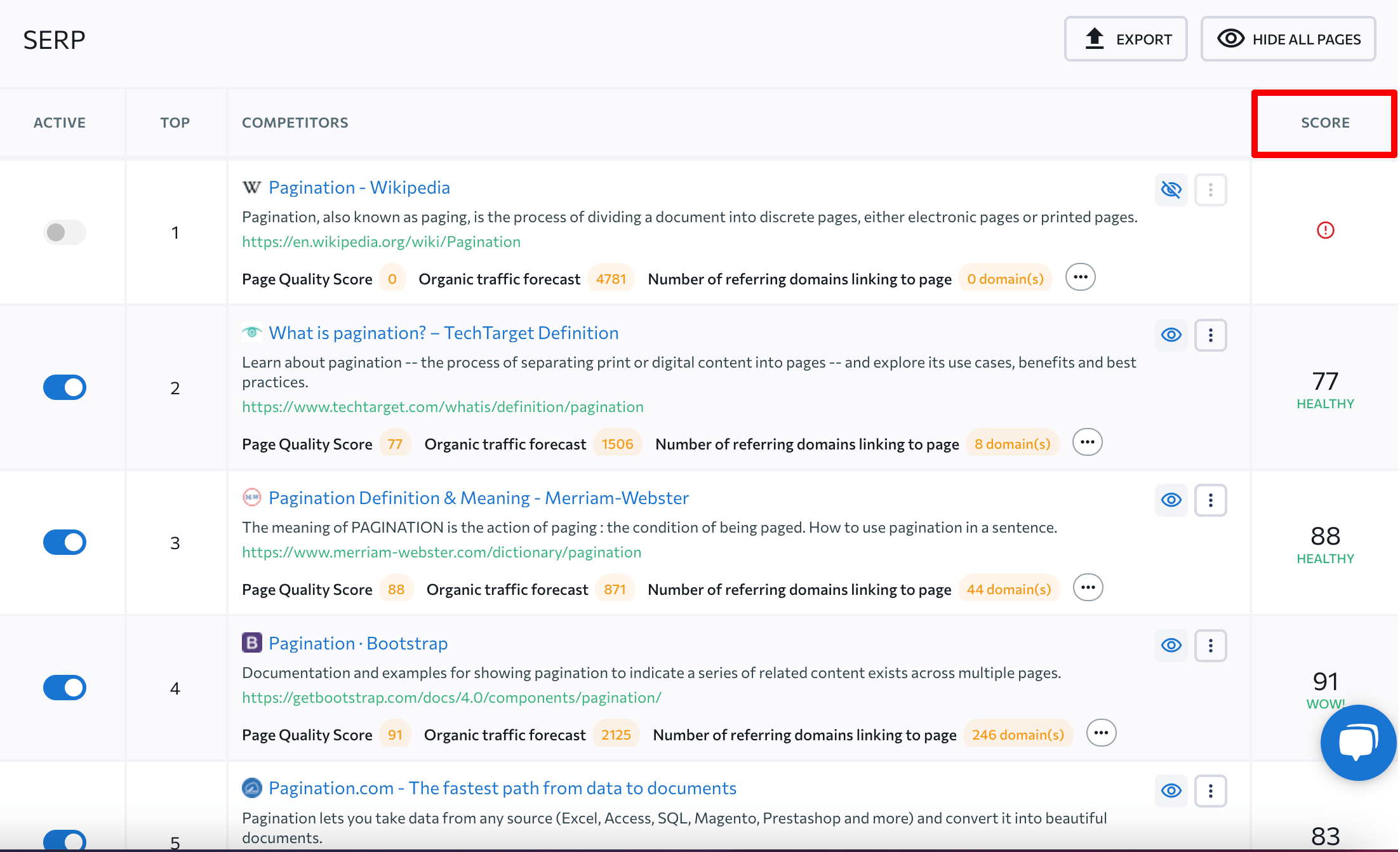
If you closely examine the table, you’ll notice that all the pages have a score of 77 or above. You can use this score as your foundation when optimizing your content.
2. Analyze your SERP competitors’ content
Examine the content structure, quality, and optimization approaches used by your SERP rivals. This can provide you with valuable insights into the most effective strategies in your niche.
The next part of this step involves analyzing the title, description, and structure of the page’s content. This will help you understand why your current competitors are using certain keywords, headings, and calls-to-action.
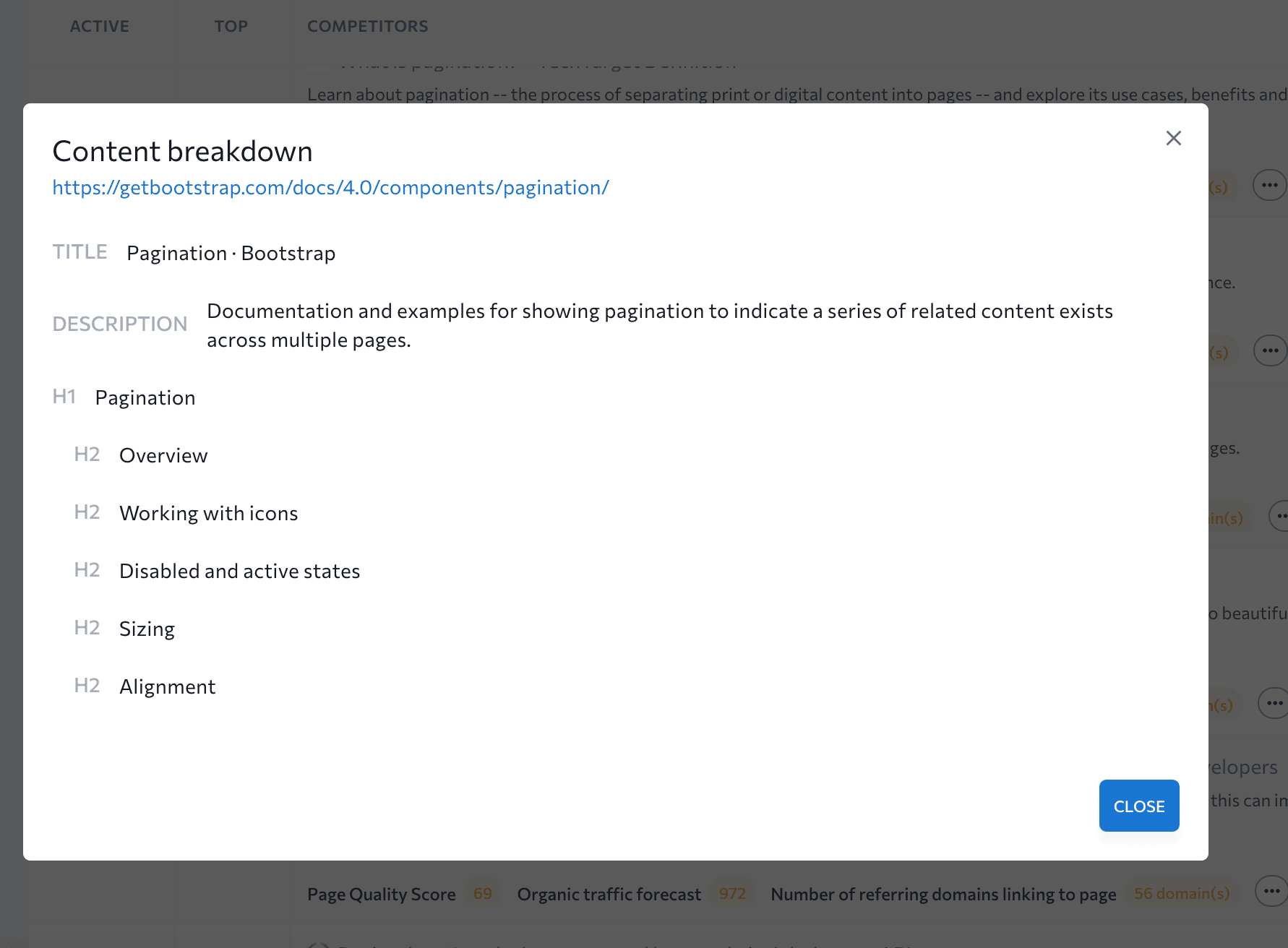
To assess each competitor’s content in more detail, you need to go through their page and get answers to the following: What topics does this page cover? How in-depth is it? Are there any outstanding features that are helpful to users?
This will give you insights into what users find valuable and engaging.
3. Assess domain metrics and backlink profiles
Take a close look at the backlinks of the SERP players you selected (on both page- and domain-levels). You want to figure out the following: the number of backlinks and referring domains pointing to your competitors’ pages/domain, their domain authority and page trust scores, etc.
The stronger the backlink profile, the greater the likelihood that the website will rank at the top and the harder it will be to compete with it.
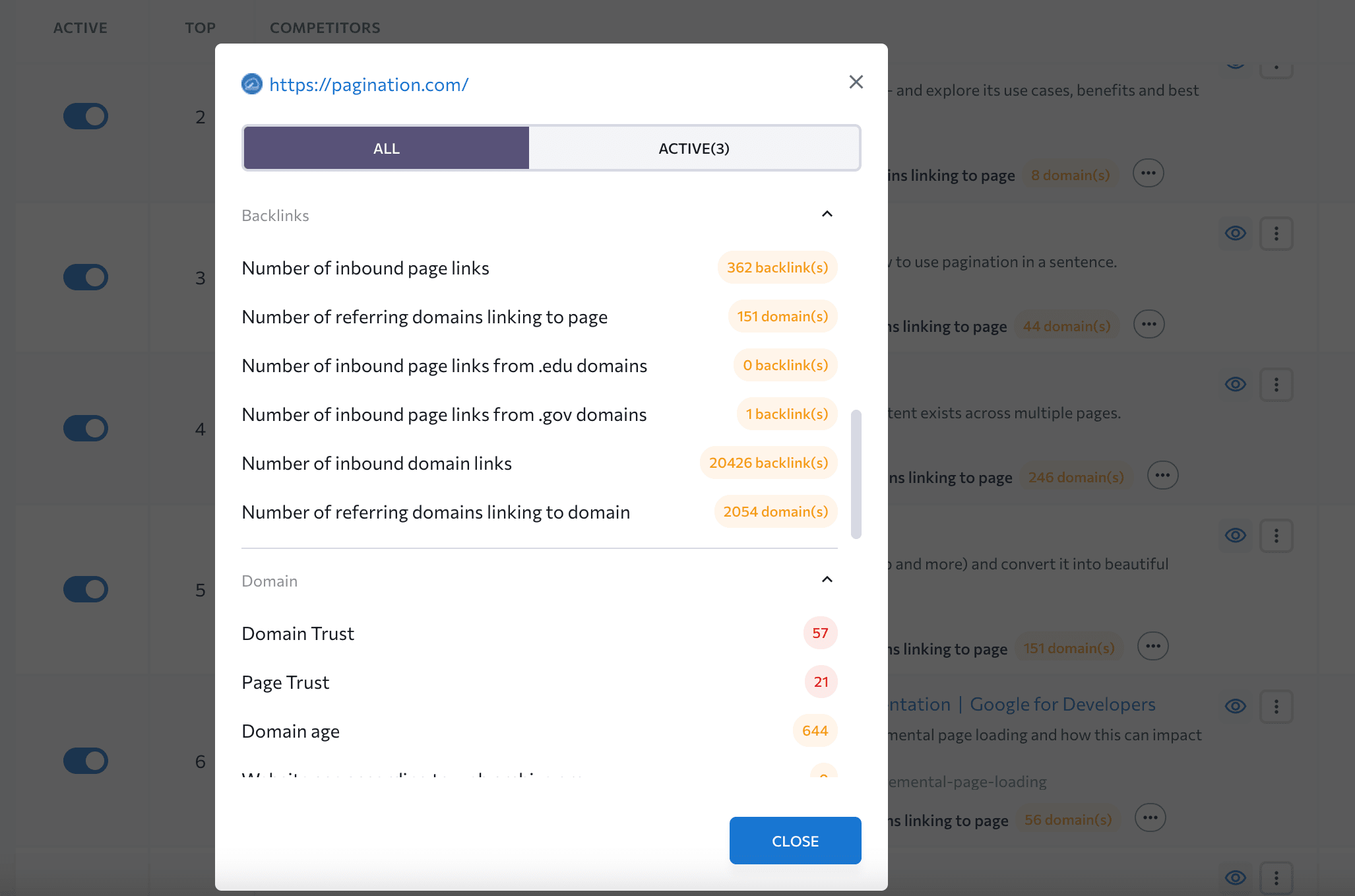
If your competitors have a high Domain Trust score and numerous high-quality referring domains, you’ll need to focus on improving your backlink strategy to surpass them.
4. Examine on-page and user experience metrics
Understanding both your and your competitors’ on-page SEO and user experience metrics is vital. These metrics directly influence your website’s performance, search engine rankings, and user satisfaction and include factors like Core Web Vitals, page load speed, mobile-friendliness, and various other parameters. SE Ranking’s SERP Analyzer summary helps you figure out how your competitors are performing for these metrics.
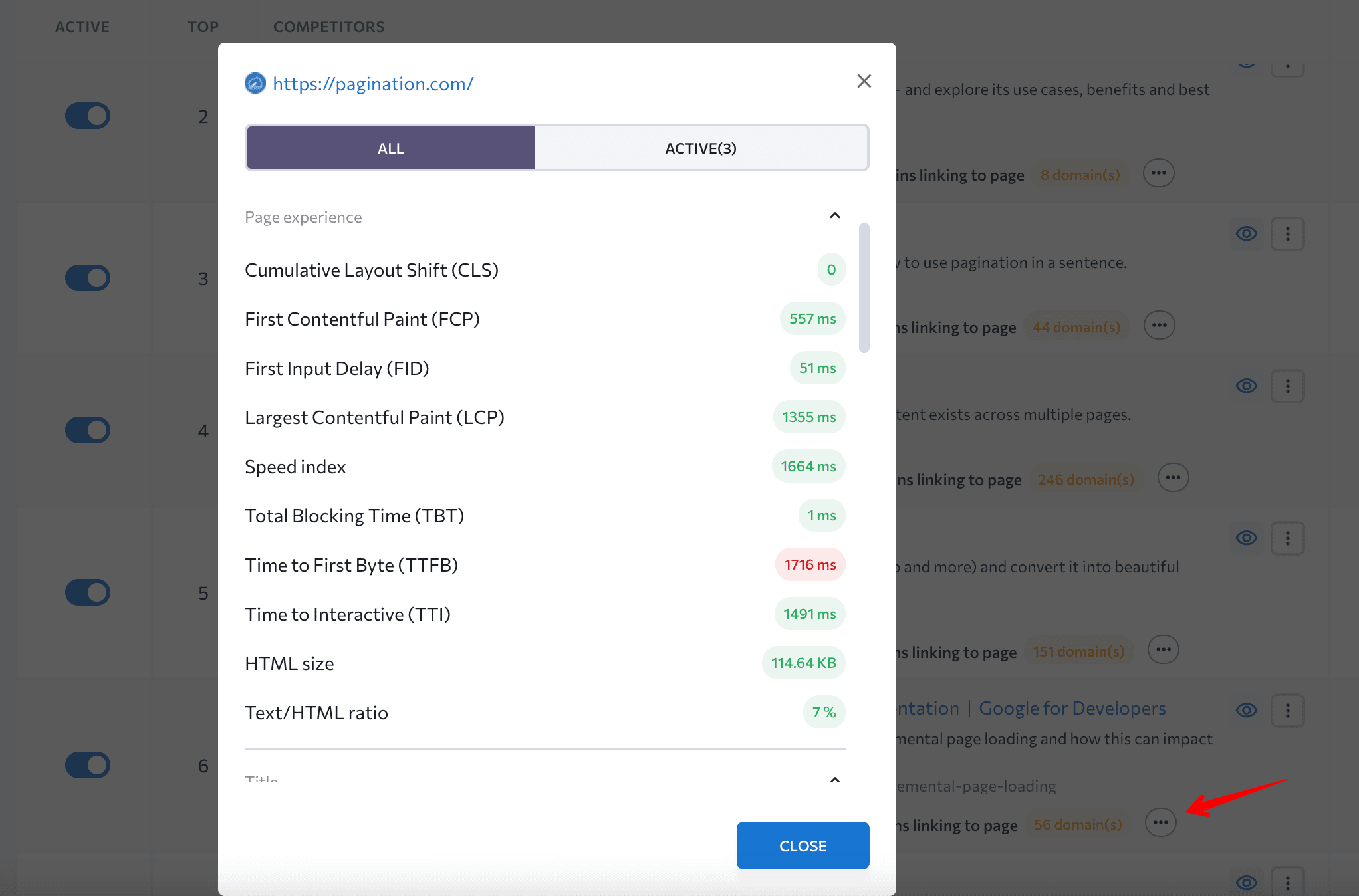
If you already have a project in SE Ranking, you can also monitor search results by the keywords found in the SERP Competitors section of the My Competitors tab. One advantage of this feature is that you can track SERPs over time by selecting specific dates or periods.

Note: If you encounter SERP rivals with strong domains (e.g., high Domain Trust scores) and an extensive backlink profile that is much larger than yours, it may seem challenging at first blush to outperform them.
But don’t abandon this SERP page just yet. Instead, investigate potential weaknesses in their content strategy. Look for gaps in information, outdated data, or opportunities where you can provide content that is more comprehensive and valuable to users. Content that is more comprehensive and wisely optimized can often bypass stronger domains that have posts of moderate quality.
Pay attention to SERP features
Google currently dedicates even more space than ever before to SERP features within search results. In the past, these elements were only seen occasionally, but now, it’s challenging to find a query that doesn’t produce any feature or rich results on the SERP. By knowing which features appear for your target keywords, you can tailor your content to appear within them. This enhances website visibility, click-through rates, and organic traffic.
Let’s look at a specific query and see which features appear for it.
Go to Keyword Research, enter your keyword, and move to the Organic Results section. You’ll see all the special elements that Google displays for that query.
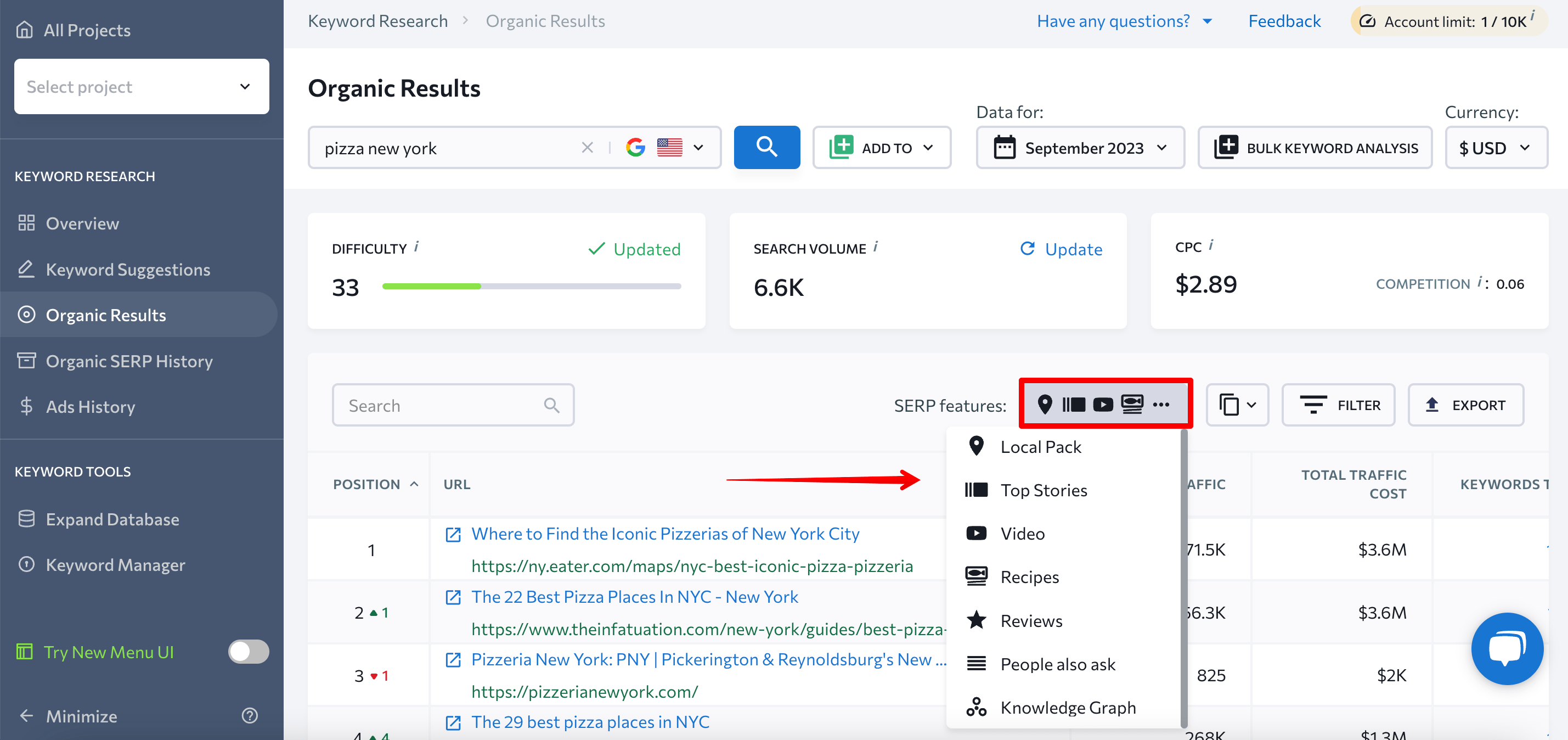
As you can see in the screenshot above, for the query “pizza new york,” seven features are displayed. This means you should try to get your page to show up in these special sections.
An even better option would be to add all your focus keywords to your project and track their features. You can do this easily with SE Ranking’s SERP Rank Tracker.
There are two main advantages here.
The first is that you will have all the data about your ranking progress for all target keywords in one table.
The second advantage is that you will easily identify the features where your site is already appearing (highlighted in blue) as well as potential opportunities that are currently occupied by other websites on the SERP (highlighted in gray).
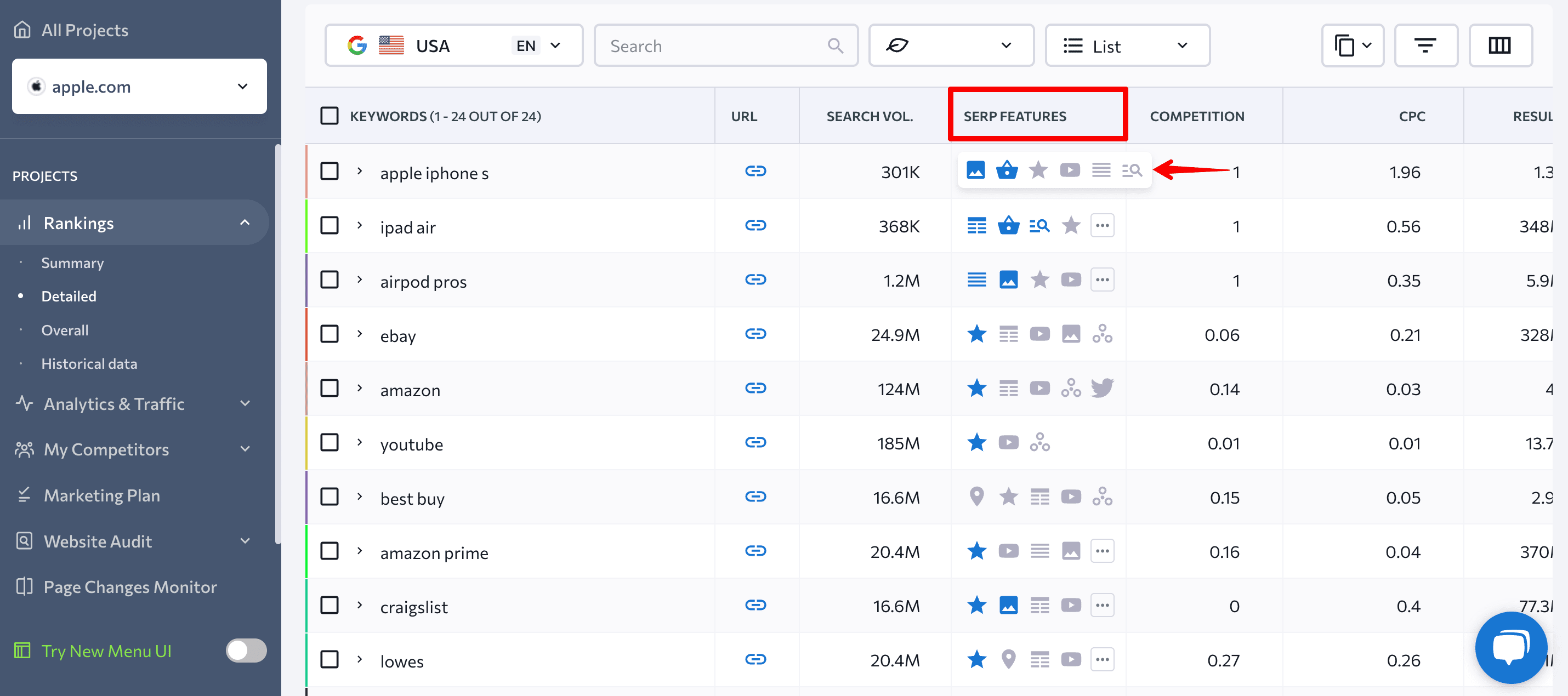
Get ready to join the top of the SERP
Now that you understand the type of content Google looks for in response to your query, it’s time to begin crafting your page content, taking into account the insights you’ve gathered from analyzing the SERP.
Here are the steps to follow:
1️⃣ Prepare a detailed brief: Navigate to the SEO Content Creator and initiate the article creation process by adding keywords, selecting the language and country. Also, give your article a name.
2️⃣ Configure your brief: You will then be directed to the brief settings. Here, you will find recommendations based on your analysis of SERP rivals. These suggestions include:
- Recommended content parameters, such as word and heading count.
- Suggested terms to include.
- External links with anchor text.
- Questions to address.
- Article structure with headings and subheadings.
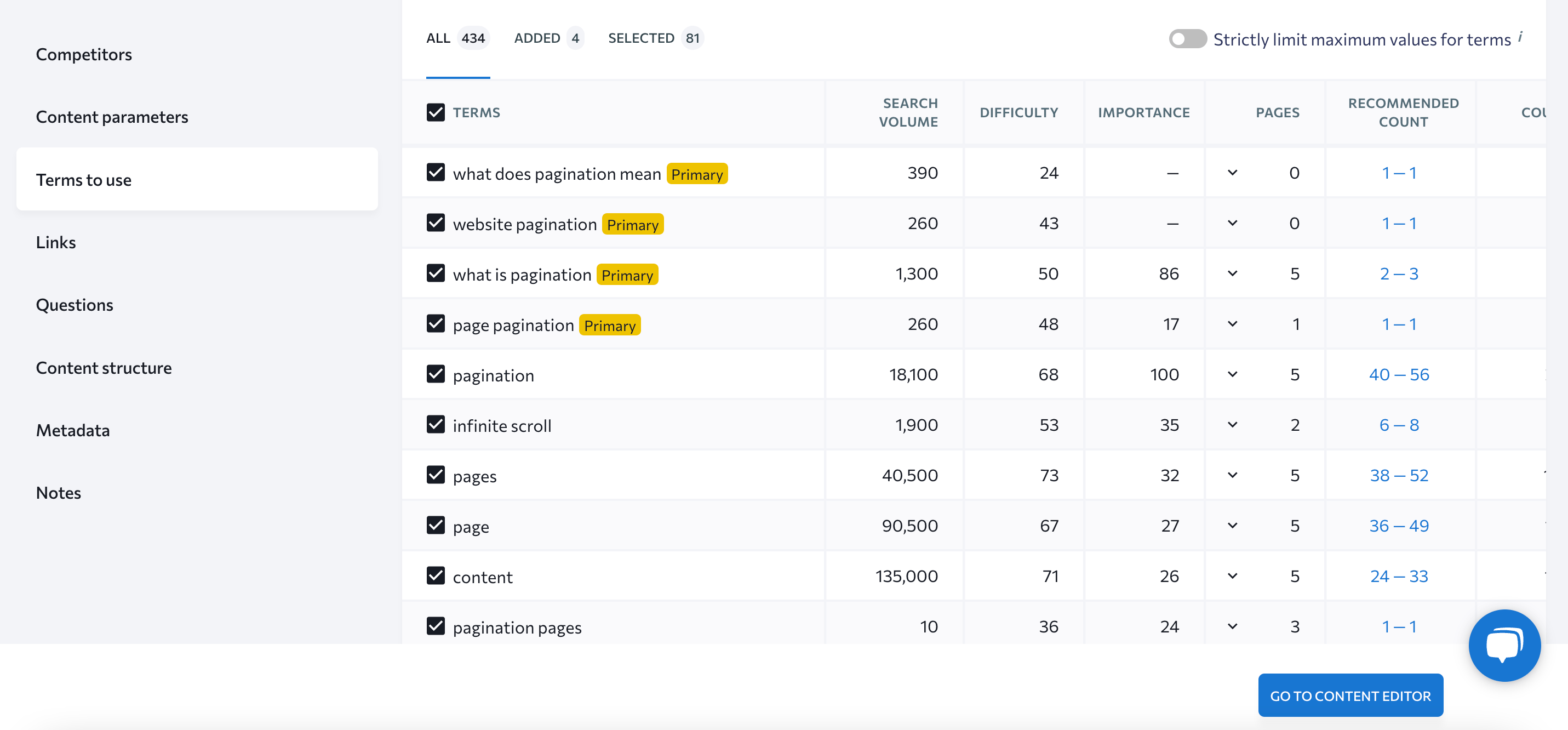
Additionally, you can specify title, meta description, and URL slug requirements and add any relevant notes.
3️⃣ Optimize your content: As you write, it’s essential to ensure that it is well-optimized. The Content Editor will assist you in tracking the progress of fulfilling your brief requirements, evaluating the content score, identifying grammar and punctuation issues, and checking for plagiarism.
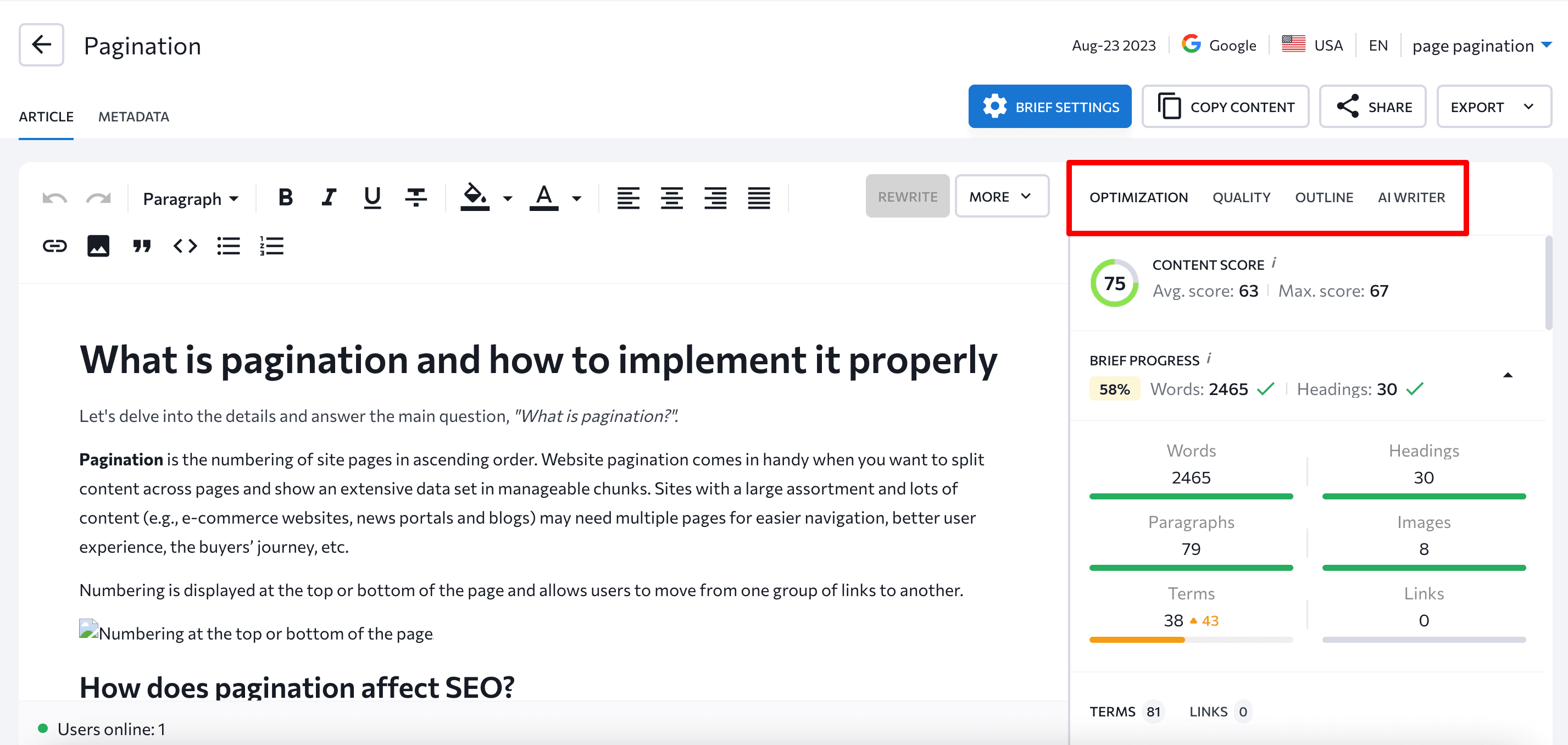
Note: If you are targeting local SERPs, ensure that you optimize both your website and Google Business Profile. You can use the Local Marketing tool to help you achieve this.
Benefits of SERP analysis
Performing a SERP analysis is an important step in SEO for anyone who wants to improve their online visibility and digital marketing efforts.
Here’s why:
A clearer vision for further steps
Conducting a SERP analysis provides you with a comprehensive view into the current search landscape. It goes beyond just targeting a keyword; it helps you understand what users and search engines think is the best result for that keyword.
When you break down the top-ranking pages, you can identify common elements such as content structure, multimedia usage, and user experience factors. Properly executing each of these elements contributes greatly to the page’s success. Having an awareness of this empowers you to adapt your content and SEO strategies more precisely.
For example, by identifying which featured snippets appear in search results, you can determine the appropriate schema markup to use. This will increase your chances of capturing specific SERP features.
Using resources wisely
Instead of spreading your resources thinly across various keywords and topics, it’s more effective to concentrate on the keywords and SERPs where you have the most realistic chance of competing and achieving meaningful results.
For instance, let’s imagine a scenario where you encounter a keyword that seems tempting at first. But upon closer examination, you realize that securing the top position in search results for this keyword would be too challenging. The competitors’ domains are much stronger than yours, and you don’t currently have the resources to provide a better user experience than your rivals. In this case, it’s better to shift your focus to alternative keywords that offer a more promising route to success.
These keywords might not have as much traffic, but they give you a more guaranteed result. This is often more valuable than chasing uncertain prospects. A bird in hand is worth two in the bush. It also helps you gradually build topic authority, so you can tackle more competitive targets over time.
Realistic expectations
A frequent cause of unmet expectations in optimization is not digging deep enough into the SERP.
Getting data-driven insights from your SERP analysis helps you create a more predictable SEO strategy. You can anticipate the level of competition, the effort required, and the likely outcomes. These insights are pivotal for managing client or stakeholder expectations. By presenting them with a clear picture of the competitive landscape and its potential challenges, you can prevent unrealistic expectations and the disappointments that follow.
Conclusion
To succeed in search, you need a keen understanding of your SERP rivals. Let’s briefly recap the steps you need to take to succeed in your SERP analysis: s: define your target keywords, analyze their search intent, assess the top-ranking pages, and examine their SERP features.
After completing these steps, you will be aware of the strengths and weaknesses of each of your competitors. You’ll also understand the search landscape and be able to meet your potential users’ expectations. Once you get these in order, you can create content with a much better chance of rising to the top compared to content created without prior investigation.
